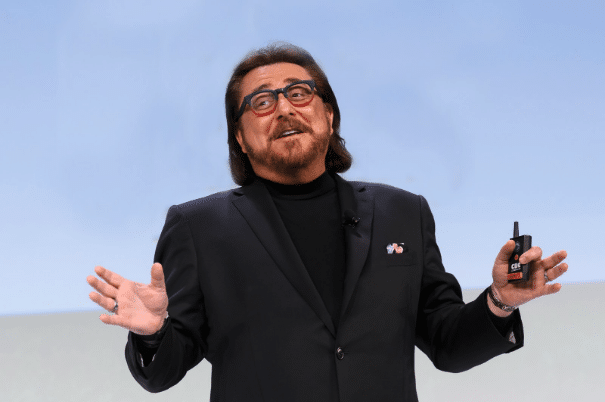
Scott McKain is an internationally known speaker who helps organizations create distinction in every phase of business and create more compelling connections between them and their customers.
Throughout the interview, Scott discusses the ways in which you can think to differentiate from the competition, being of greater service to the customer, and operating with a degree of consistency across all the channels.
Can you introduce yourself and tell us about your background?
I am Scott McKain, author and professional speaker. I have written books such as “Create Distinction”, “ICONIC”, and have been fortunate enough to speak to organizations all over the World such as: Apple, Volkswagen, Cisco, Porsche, and many others. It’s my privilege to research about and talk about how organizations and individuals can separate themselves and create distinction in a hyper-competitive market space.
In your opinion, how important is distinction for Customer Service and for Sales?
I think it is incredibly important, as you might imagine. One of the most fascinating aspects about how the world is changing is found in the fact the customer now holds all the cards – they possess an extraordinary amount of information. In many cases, they have as much information as the salesperson has. I believe that the Customer Experience is the only thing, in many cases, that will differentiate us from the competition.
Many years ago, when I first started in this business, the cliché was that, “Service is the first step of the next sale.” That is antiquated today! Service is the first part of the first sale — and all the others that we make with customers.
It is not just about providing service, it is creating an experience. It is about, “How do customers feel about doing business with us?” Then, how do we enhance those feelings? How do we make those feelings something so compelling that they would like to share their experience with us to their friends and their colleagues at work?
I think it is one of the most important aspects of business today. There are a lot of statistics out there – from a myriad of sources indicating that it is easier to keep a customer than get a new one. Just notice the higher level of profitability of those companies ranked as extraordinary in terms of customer experience. In many – perhaps most – cases, their profitability is superior to those competitors that aren’t ranked as highly in delivering the experience that customers desire.
There are just so many leading indicators and so much research that has been done that demonstrates the ROI on the customer experience is extraordinary. Yet, we still find that there are numerous organizations and many leaders who don’t pursue it with vigor and intensity that I believe they should.
Speaking of sharing insights, in your latest book titled “ICONIC: How Organizations and Leaders Attain, Sustain, and Regain the Ultimate Level of Distinction,” What does it look at in terms of Customer Experience?
The book “ICONIC” is really about how you attain the highest level of distinction. Distinctive organizations stand out within their individual markets. But “ICONIC” organizations are known regardless of the marketplace
For example; a local coffee shop might be the best coffee brewer in your city and might be a place you seek out. You’d consider it a distinctive coffee shop. However, Starbucks is globally recognized not just for coffee, but for service and many other aspects. It is an iconic organization.
Therefore, “ICONIC” is about how you transcend your own category. It asks, “How do you attain the highest level of distinction?” I believe that is impossible to do without extraordinary customer experiences.
You must be asking, “Is the word of mouth that we generate, the experiences that our customers have so compelling that it makes them want to return and repeat their business?” This effort dramatically enhances the lifetime value of customers. So, in so many ways, the customer experience is how we differentiate ourselves from the competition.
It’s really interesting, as I am speaking to you from a resort in Hawaii where I am working with a program. I ended up talking to a gentleman last night in the restaurant whose business is building medicine cabinets for bathrooms.
I asked him, “How do you obtain success – how do you stand out?” He said, “We have a unique design. But, more importantly, we take care of our customers more than anyone else. That is why are the leading supplier in the world.” Even something that we might consider as a commodity – like medicine cabinets — can be differentiated by creating an extraordinary experience for customers.
One of the hard things is that you can’t do this with a one size fits all approach. You need to be unique to your industry and to your customers. There is no solitary way that you can approach it, because we have great variations in our respective businesses — be it B2B or B2C. However, it is about finding a unique way to serve those customers that will make you stand out.

Could you tell us about the most significant or distinctive change in terms of customer service you’ve observed recently?
I see customers continually raising their expectations – and, unfortunately, customers continually disappointed for a couple of reasons.
One is that the customer has total access to information. It used to be that wherever it was in the world that you would go to purchase an automobile, the sales professional at the dealership knew more about the car, the pricing, and knew more about what other customers had paid for that same car than we could ever hope to.
Now, before I walk in the dealership, I have researched the specific model, the make, researched what other customers paid for the car. I walk in more empowered than ever before. Therefore, the only way the dealer can differentiate from others is how they connect with me and serve me.
Yet, so few organizations have really grasped that — or executed strategies based upon customers as they are in the marketplace now. Therefore, customers raise their expectations and are continually disappointed by companies that aren’t meeting those levels.
The second thing is that customers are willing to switch suppliers based on service, not just price and product. We talked earlier about the phenomenon where it is easy for a competitor to duplicate your advances in terms of product. This also creates a “commodity mindset” among many organizations.
The only way a customer is created is when they some type of differentiation between the products being offered. In other words, if what you’re selling and what I’m selling appear to be exactly the same to the customer, the only way they make a decision is to notice some kind of differentiation. If we don’t provide some degree of service differentiation, then all the customer has to choose upon is price.
Once we provide something else to differentiate us, now we have added something to the mix in terms of their decision-making process. I believe that customers view much of what we do in business as a vast sea of sameness. They aren’t seeing distinction between different products or different services within specific markets.
Would you say that being different and being available where your customers are is key to delivering a remarkable Customer Service?
That’s part of what is so critical today. You mentioned about how customers are changing and one of the ways that businesses haven’t changed enough it seems to me is the way they connect with customers.
Businesses we work with — and what your organization does — are great examples of how to execute that. For example, when I go to a bank and set up an account, one of the first questions they should ask is, “How would like for us to communicate with you? If you want a phone call, we’ll call you. If you want a text, if you want an email, we will communicate with you based on the methodology that you prefer.” Then, the bank should deliver constant communication on the channel that the customer prefers.
I see that as extraordinarily important! How do we design our communication around what the customer wants, rather than us saying, “This is just how we have always done it.
How do we become an ongoing part of that customer’s life? Not that we are constantly selling them what we do, but that we are constantly asking how we can be of greater service. Here is an idea that might help you: we should be providing suggestions and insight — not the old school, hard closing, aggressive tactics in sales. It is about being present and not about being pushy.
For us we know that our clients have to care for their customers. So it’s about growing with the customer’s demands and what they expect.
To piggyback on that point, one of the sayings that irritates me so much is when I see a business say, “We exceed customer expectations.” I turn around and say “Great, could you give me some specifics on what your customers expect?” In almost every case, they don’t have the technology or the methodology in place to really know. I don’t know how you exceed an expectation of which you’re uncertain.
Part of what I love about what you folks do — and organizations that work with you have — is this presence in the customer’s life. You understand what their expectations are. Because if you don’t understand that — and you are not aware of how to research that — those are expectations that you cannot succeed at fulfilling. Nor can you hope to exceed a customer’s expectations…if you are not aware of what they are.
That’s part of what I love: organizations that are committed to being connected — so they can understand and exceed expectations that customers have of the experience.

Customers expect a multi-channel approach to being able to do business with you. But, they also expect a degree of consistency across all the channels. They don’t want to hear one thing on a channel and find out something else on another. They also don’t want a better price on a channel and a higher price on another. What we want is consistency across channels and organizations. That gets very difficult.
One of the things I see changing – and Volkswagen Group Australia is doing some of the lead work on this – is that one of the factors I talk about in the book “ICONIC” is this: organizations are evaluated based on two dimensions; promise and performance.
In other words, what did we say that we would do for the customer — and did we do what we said we would do? It’s only promise and performance.
Yet, organizationally, we usually find it’s one department or division making the promise and a completely separate part that is responsible for delivering on that promise.
Part of what Volkswagen Group Australia is doing is that not only have they named a Chief Customer Officer, but they also chose to have that same executive as their Chief Marketing Officer at the C-suite level. This means that the executive in charge of the marketing – in other words, making the promise — is also in charge of the customer experience, which delivers the promise. This unique effort is to make certain that there is congruence. I think we are going to see that a lot in organizations in the future.
I see that as a trend that is going to happen because Millennial customers — and certainly Generation Z customers, too — are demanding that we do what we said we do, when we said we would do it. When we achieve that, we build more loyalty with our customers because delivery system models integrity
So in saying that, we have to incorporate the digital mindset of Generation Z who were born with the phone in their hands as it were, they expect to contact in new ways regardless of the query?
You have hit on a really important point there! I think that many times, those of us working in the customer experience misunderstand. When we look at Millennials and those in Generation Z, they are not tech-savvy, they are tech-dependent. There’s a big distinction between the two.
Generation X created the technology and grew up inventing the technology. Generation Z grew up with a phone in their hand. They’ve just always assumed that it works. When it doesn’t, they’re not tech-savvy — they’re tech-dependent. They don’t know what to do to make it work. Nor should they — it is a product and it should work. So, what we find is that there is extraordinarily high desire from them to get personal help and assistance when technology doesn’t meet their needs.
We find in many cases that organizations are eliminating the personal touch in favor of technology – especially with all the talk of AI and everything else. It’s critically important that organizations recognize that they also have to be ready with well-trained staff, who can deliver for these people when there is a problem with technology. That will be a real difference maker in the future.
Is there anything else you would like to talk about?
I have a short, daily podcast which can give you an idea of what to do in order to stand out in your marketplace, it’s titled “Project Distinct”. My books are all available on Amazon. Plus I travel all over the world to speak at conventions and conferences for organizations of all sizes.
It is a privilege to bring the message of ultimate customer experience and what it takes to create distinction is something I am privileged to do and would love to do for other organizations as well. Whether it is checking out the podcast, books, or speeches, it’s always a privilege to be of service to organizations seeking to enhance the experience their customers receive.
Learn more about Scott’s work through his LinkedIn and Twitter, and website.
Originally published Aug 19, 2019, updated Dec 30, 2022




